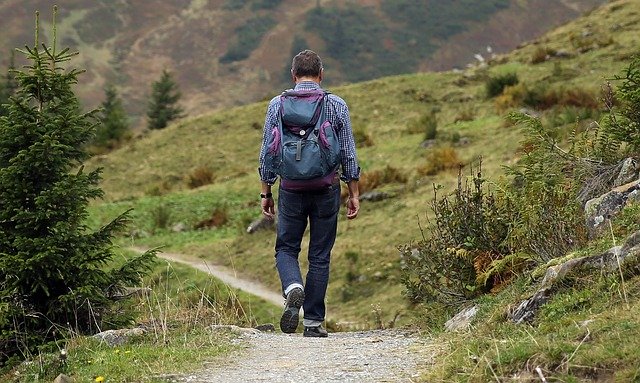This article is a quick guide for a safe and successful hike in the bay area. we extracted this artilce form the book called “Tri-valley Trails” by “Nancy Rodrigue and Jacky Poulsen”. Complete checklist before starting the hike, please feel free to add comments and guide us to
Practical ideas for safe/successful Hiking
Weather:
The Tri-Valley is perfect for year around hiking with some precautions. Summer temperature can exceed 100 degrees. At this time of year, it’s best to hike in the morning when the cool evening air still lingers., Choose trails with tree cover or with trees on the east side that block the morning sun. Carry plenty of water for you and your pet and wear light colored, breathable fabric. Some trails dry out and become very dusty especially i8f shared with cows, horses and bikes. This only becomes a problem on steep downhill treks where they can be slippery.
Winter coolness and rain can come as early as mid-October or as late as the end of November. Typical daytime temperatures in winter r4ange from the low 50’s to the low 60’s and can be windy. Rain turns the golden hills a luscious Kelly green. After a heavy rain, quite a few of the trails a muddy and sticky with wet clay. This can add a few pounds to you feet, so it might be best to avoid hiking for a couple of days.
What to wear:
Weather can change during the course of a hike, so it’s always best to bring layers. Lightweight hiking pants that can unzip into shorts are wonderful, especially in the spring and fall. Comfortable shoes with good tread are particularly important on hikes with climbs. Wear good hiking socks that won’t cause blisters. On hot or sunny days a lightweight hat with a good visor is a must.
What to bring:
Be sure to bring sunscreen, sunglasses, a hat and plenty of water. Do not plan to drink water from the streams along the trails as they are often contaminated. It’s a good idea to have a compass or GPS, and always carry a park map. Hiking poles can be helpful especially if you have back or knee problems.
Wildlife:
It is always a special treat to see animals in the wild. Sightings of large cats, elk, and boar are rare, especially in mid-day. Deer sightings are fairly common and always exciting. Once we saw a small herd of deer at Del Valle being stalked, then chased, by a bobcat. Luckily for the deer, our interruption side tracked the chase. It’s a good idea to be noisy hiker so the animals get warning to bolt, avoiding confrontation with humans.
Cows graze in many of the parks. Keep your distance when calves are nearby, as the moms are very protective of their young.
Snakes are not aggressive unless provoked. The exception to this is around May or June, when rattlesnakes first come out of hibernation. They a blind, or almost so, and this vulnerability makes them more aggressive than usual. It’s a good idea to keep your dog leashed during this time of year and to stay on cleared trails.
The East Bay Regional Parks District has information available about how to react when encountering animals. This is posted at park entrances and in brochures at trailheads.
Small animals, such as rodents and birds, are a significant part of the ecosystem in the parks. They are a part of the food chain, they distribute seeds, and are delight to watch. Respect them by keeping your distance.
Poison Oak:
This does exist in most of the parks, and it is important to learn how to identify it so you can avoid it. For most of the year it can be easily recognized by its shiny leaves, three to a stem, with scalloped edges. In winter the leaves drop, and the remaining branches can still release their poison. Don’t make the mistake many people have made, thinking you are immune to poison oak. A thorough scrubbing immediately after taking a hike often eliminates any problems if you do touch it.
Trails:
If a trail is labelled “Road” you can bet that it is any old ranch or carriage road converted into a hiking trail. Many of these trails are wide enough for a vehicle to pass. Narrow trails, also called footpaths (or single track in some guides) are either official park paths or livestock/wildlife trails and will accommodate one or two hikers abreast. Large groups often prefer the roads so that 4 or 5 people can walk side3 by side. Others prefer the footpaths that tend to wander among trees and less travelled parts of the parks. Read the trail description if this is important to you.
Children:
The best way to introduce the little ones to hiking is to have a specific destination in mind. They do best if they know that there is something fun to do when they get there such as climbing, wading in a creek, or swimming. The “Hikes by Attraction” section lists trails meeting these specifications. Read about the hike to decide if it’s a good choice for your child. Also, keep in mind the length and altitude gain of the hike, especially for the very young.
Always take along munchies that the kids can put in their pockets, such as cereal or trail mix.
A special word about shoes:
The most important thing is fit. Hiking boots aren’t always necessary and in some cases might be too heavy for children. Rubber soles with some tread on them are important to prevent slipping in both dry and wet conditions. Good hiking socks, can prevent painful blisters.

Our Tree service company in Hayward encourage our user to take a hike whenever possible and we try our best to keep our community green
Continue reading about “Building Communities“
